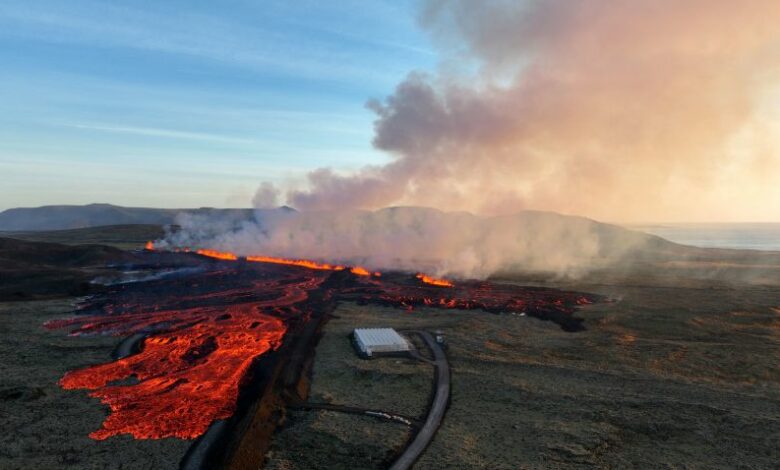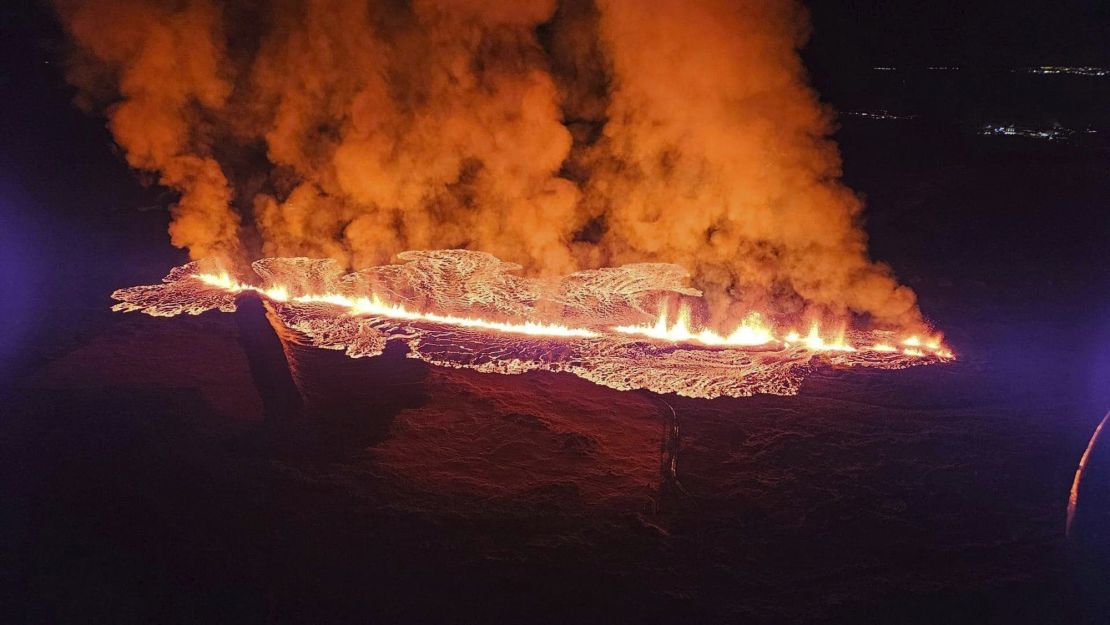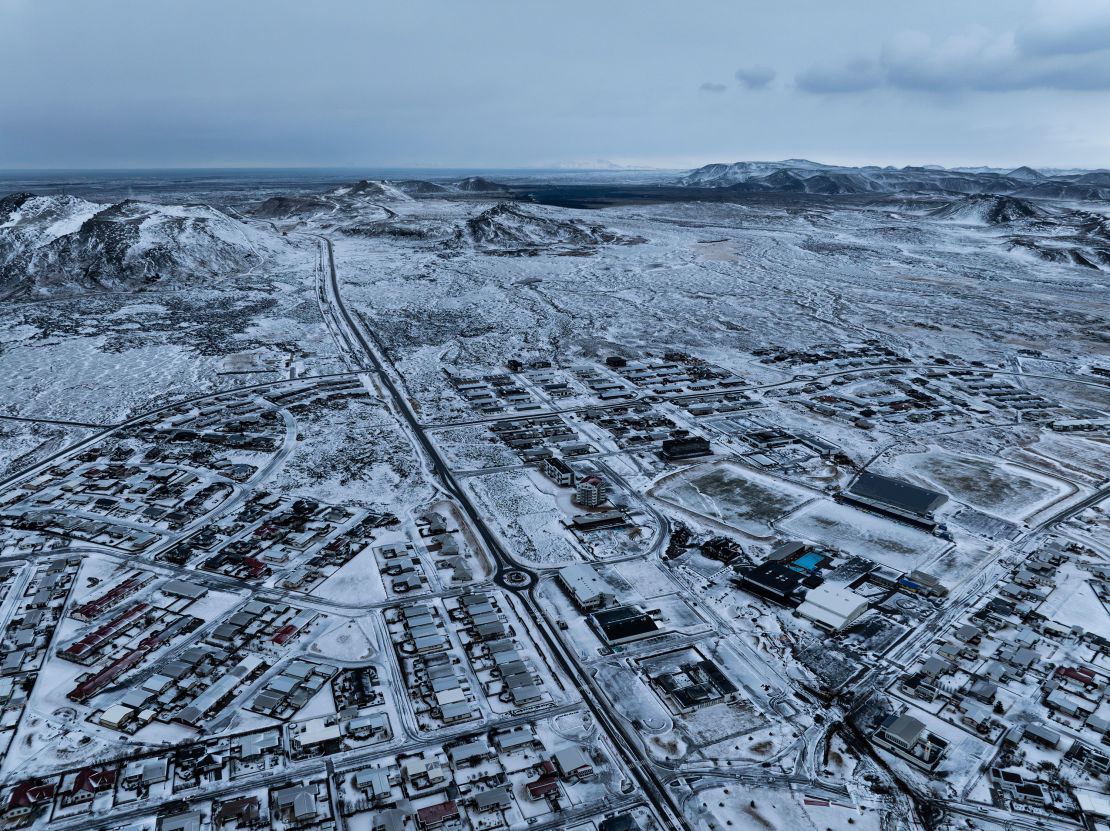
There was no immediate threat to the residents of Grindavik, a small fishing town, which is under evacuation orders.
A webcam set up by Iceland’s public broadcaster RUV showed a stream of lava flowing into Grindavík, with the burning buildings just meters away from other houses.
Hjordis Gudmundsdottir, a spokesperson for Iceland’s Civil Protection Agency had warned CNN earlier that it was “quite possible” for lava to reach the town and damage infrastructure even as it was protected by anti-lava walls, and that authorities were tracking the flow.
On Saturday, Iceland’s National Commissioner of Police ordered residents in Grindavík, first evacuated in November, to evacuate again by Monday night after volcanic fissures opened on roads in the area.
Sixty households – 10% of the town’s usual population – have been evacuated so far, Gudmundsdottir said, adding that many people had not yet returned after last month’s eruption. There was no danger to human life, Gudmundsdottir said.


Following the eruption, police raised the alert level. An Icelandic Coast Guard helicopter has also been deployed to monitor the situation.
Hours before the eruption, Iceland’s meteorological office had reported an earthquake.
Talking about air travel, Gudmundsdottir told CNN that the airport in nearby Keflavik was safe as the eruption hadn’t produced any ash, which can impact flights. “This eruption will not affect Keflavik airport or air travel in general,” she said.
Grindavík, about 70 kilometers (43 miles) southwest of Iceland’s capital city Reykjavík on the Reykjanes peninsula, was previously evacuated following weeks of seismic activity which culminated in a dramatic volcanic eruption that expelled bursts of lava and sent huge plumes of smoke into the sky.
The crack after December’s eruption measured around four kilometers, while Sunday’s eruption crack was around a quarter of the length.
The town is also home to Iceland’s famed Blue Lagoon, which draws tourists to its steaming geothermal water and is one of the country’s most visited attractions.
“It can be assumed that the order will be in effect for the upcoming three weeks,” the country’s Civil Protection Agency said in a statement, adding that the only exceptions to the order would be for authorities to conduct official business or for residents “for short periods while salvaging valuables.”
The latest evacuation order comes after the Icelandic Meteorological Office reported on Friday that hazards associated with volcanic fissures were deemed higher risk than in its previous assessment.
“Based on the Civil Protection Department’s hazard assessment issued on January 12, it is not considered justifiable to continue to dwell in Grindavík, in light of public safety considerations,” the government agency said.

The amount of magma had reached a level similar to when a previous eruption occurred in December, the agency said. But in the case of the latest eruption, magma could “migrate further south” – as compared to the previous eruption – and possibly reach Grindavík town.
The eruption in December is thought to have been the largest so far, according to authorities
A state of emergency was declared in November.
Iceland’s volcanoes
Iceland is home to 32 active volcanoes and sits on a tectonic plate boundary that continually splits apart, pushing North America and Eurasia away from each other along the line of the Mid-Atlantic Ridge.
As such, the country is accustomed to volcanic eruptions, though they often occur in the wilderness, away from populated areas.
The Bárðarbunga volcanic system in the center of the country erupted in 2014, producing lava that covered 84 square kilometers (32 square miles) of highland but didn’t damage any communities.
Experts do not expect the latest series of eruptions to cause the same level of chaos as seen in 2010 when the Eyjafjallajökull volcano erupted, since it is unlikely to involve glacial ice that led to a huge ash cloud.
About 100,000 flights were canceled, affecting 2 million people, as a result of the ash spewed out by the 2010 eruption, which threatened to stall aircraft engines and cause electrical failure.




